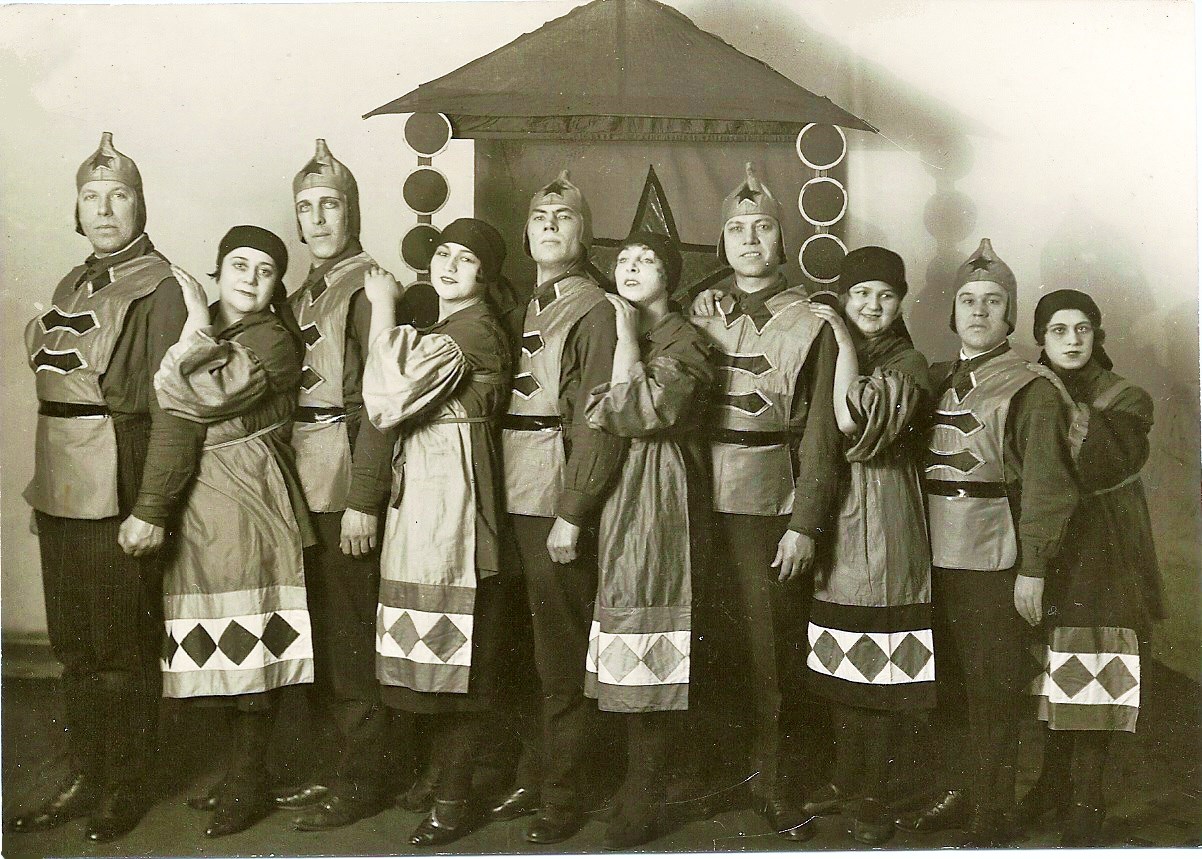The Living Newspaper was an early 19th century travelling theatre programme for the dissemination of news before the invention of television. The first version of this to be used in an “improv” show was by Jacob Moreno, a Romanian doctor who later became the creator of psychodrama. Titled “Stegreiftheater” (English translation: Theatre of Spontaneity), it premiered in Vienna in 1922 and featured a Living News style segment. This was followed by possibly hundreds of variations in improv from then until now. The most popular modern day version is probably Jason Chin’s Whirled News Tonight, which started in 2003 at the iO theatre Chicago and is still running. For a few years before and after the COVID-19 pandemic years, we ran our own AOI version of the show titled The Living News.
The following is an overview of The Living Newspaper, and is a partial extract from Richard Bennett’s book Inside Improvisation. More detail on the people and groups mentioned can be found throughout the rest of the book.
Living Newspaper is an improvised show format, where improvisors play scenes inspired by that day’s news stories. Rarely referred to by name, and originally unrelated to improvisation, it became the basis of one of the most popular improvisation show forms of the 20th century, and has a history going back to the early 1900s. Until the advent of immediate personal communication such as SMS and social networks, no other theatre format could better demonstrate the immediacy of improvised theatre.
In 1919, the Russian government created the Living Newspaper to disseminate Soviet news and propaganda. The news was literally read to the public while moving picture images and actors were at the same time used to support the commentary. The Blue Blouse theatre collective was created in 1923, which continued to spread across Russia, and by its height in 1927 boasted over 5000 such troupes.
Whether Moreno’s 1921 Theatre of Spontaneity was influenced directly or indirectly by the Living Newspaper, or conversely whether Moreno’s work somehow influenced Living Newspaper, is unclear. However, in the 2000 paper titled Living Newspaper. Theatre and Therapy, author and Moreno historian John Casson makes strong cases for both.
The concept of a Living Newspaper was popular around the world throughout the first half of the 20th century, because it narrated the news in an era without television or video — something the Greeks and Romans were also doing back in their day. Thus, we see slightly different versions of it appearing throughout the world.
We see it in Moreno’s work, in Russia’s propaganda, in other countries across Europe, Asia and South America, as well as in cities across the U.S., both as independent and as federally funded workers’ theatres through the WPA — Work Projects Administration, a federal U.S. agency for public works, for which Viola Spolin was an early Drama Supervisor.
The Living Newspaper influenced David Shepherd in the development of theatrical improvisation, with him originally wanting to open a workers’ cabaret theatre. This led to Shepherd’s founding of The Compass Players — that coincidentally also opened its show with a Living Newspaper set which incorporated news events as scene suggestions. The Second City even later considered developing a TV show titled The Living Newspaper around 1961-1962. The technique was also used in Britain variously over the years, including in workshops by the writers’ group at the Royal Court Theatre in London which ran from 1958 to 1959, of which Keith Johnstone was a member.

Photograph of Augusto Boal presenting his Theatre of the Oppressed workshop in 2009, at the Riverside Church in New York City
In December 1970, Brazilian theatre director Augusto Boal started developing his Newspaper Theatre in São Paulo, with his Nucleus Two group of the Arena Theatre. This is the first theatre form he developed that later became part of his 1974 book Theatre of the Oppressed. Newspaper Theatre is a set of ten techniques for using the current news in theatre performance, and while most of the techniques require research, analysis and preparation, one of them is for using improvisation to immediately act out the news. Boal had been part of a psychodrama group from 1967 to 1968, so he was also familiar with Moreno’s work.
It is impossible to identify the inspiration for any of these Living Newspapers, partly because there were so many of them, but also because it is — perhaps simply retrospectively — such a simple, obvious and popular idea.


